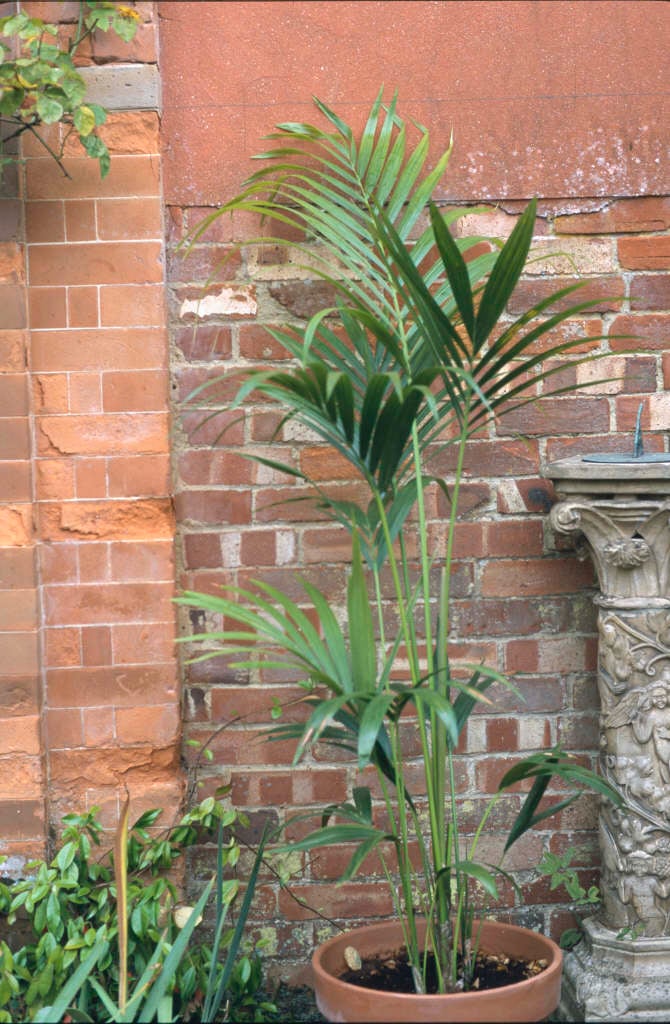Howea belmoreana
Belmore sentry palm
A medium-sized palm with ringed trunk and arching pinnate leaves to 2m long with slender pinnae; pendant pale brown male flowers and green female flowers appear in summer

Buy this plant
Size
Ultimate height
4–8 metresTime to ultimate height
20–50 yearsUltimate spread
2.5–4 metresGrowing conditions
Moisture
Moist but well–drainedpH
NeutralColour & scent
| Stem | Flower | Foliage | Fruit | |
| Spring | Green | |||
|---|---|---|---|---|
| Summer | Brown Green | Green | ||
| Autumn | Green | |||
| Winter | Green |
Position
- Full sun
- Partial shade
Aspect
South–facing or West–facing
Exposure
Sheltered Hardiness
H1BBotanical details
- Family
- Arecaceae
- Native to GB / Ireland
- No
- Foliage
- Evergreen
- Habit
- Bushy
- Genus
Howea are evergreen palms with solitary stems bearing large, long-stalked, pinnate leaves composed of linear segments; with small star-shaped flowers borne in pendulous axillary clusters of spikes, followed by small oval fruits
- Name status
Correct
- Plant range
- Lord Howe Island, Australia
How to grow
Cultivation
Grow under glass in a peat-free, loam-based potting compost with equal parts pulverised bark and leaf mould, in full light. Provide moderate humidity and apply a balanced liquid fertiliser. Water sparingly in winter and top dress or pot on in spring. Repotting will not need to be done often, as it is a slow growing plant
Propagation
Propagate by seed sown at 26°C (76°F) as soon as it is ripe
Suggested planting locations and garden types
- Architectural
- Coastal
Pruning
No pruning required
Pests
May be susceptible to scale and glasshouse red spider mite
Diseases
Generally disease-free
Get involved
The Royal Horticultural Society is the UK’s leading gardening charity. We aim to enrich everyone’s life through plants, and make the UK a greener and more beautiful place.